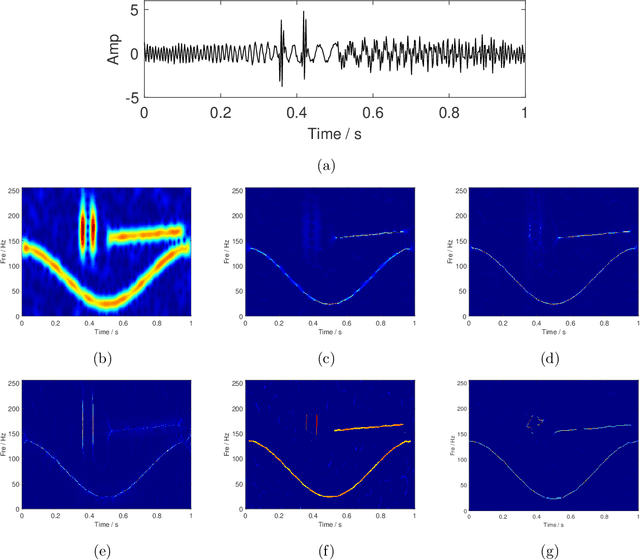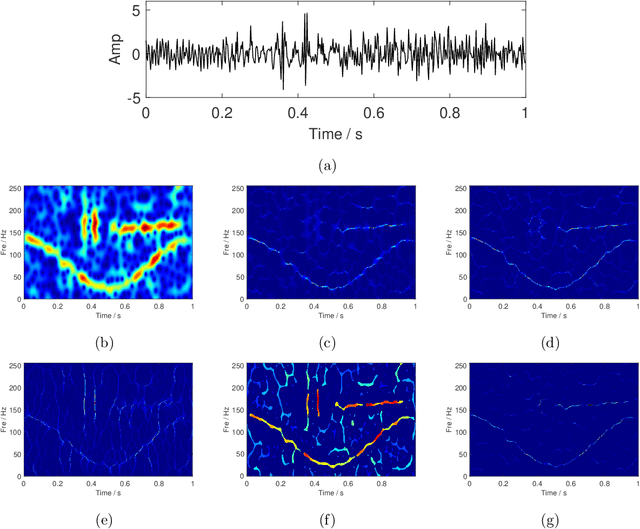IF equation: a feature extractor for high-concentration time-frequency representation
Paper and Code
Nov 23, 2021


High-concentration time-frequency (TF) representation provides a valuable tool for characterizing multi-component non-stationary signals. In our previous work, we proposed using an instantaneous frequency (IF) equation to sharpen the TF distribution and its effectiveness has been verified in experiments. In this paper, we systematically discuss why the IF equation-based TF analysis methods work and how to use the IF equation to improve the TF sharpness. By theory analysis, many popular TF post-processing methods, such as the synchroextracting transform, the multi-synchrosqueezing transform, and the time extracting transform, fall into the IF equation-based category. A comparison of the IF equation-based method with the popular synchrosqueezing transform is made. Numerical examples of the theoretical derivations are presented to illustrate the performance of the proposed IF equation-based TF analysis method.
 Add to Chrome
Add to Chrome Add to Firefox
Add to Firefox Add to Edge
Add to Edge